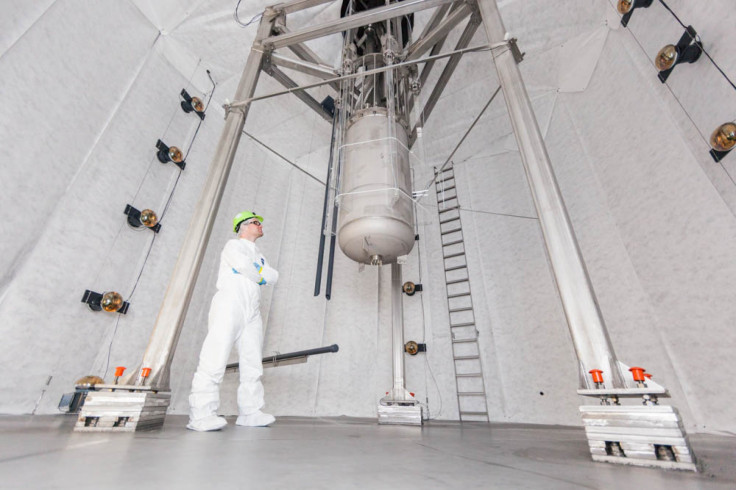Large Underground Xenon's Dark Matter Detector Turns Up Nothing, What's Next For The Experiment?

The Large Underground Xenon's dark matter detector turned up nothing, it was revealed Wednesday, but that's not the end of the experiment. LUX researchers were looking for a "weakly interacting massive particle," WIMP, that could explain the existence of dark matter, but say they are not discouraged by the lack of results so far.
Wednesday's event detailed the first results from the dark matter detector. Dark matter makes up 26.8 percent of the universe, compared to just 4.9 percent for normal matter, but it cannot be observed directly. The researchers were hoping WIMPs, given the name as these particles only interact with normal matter through gravity, would explain dark matter.
According to the researchers for the Sanford Underground Research Facility in Lead, S.D., the dark matter detector is 20 times more sensitive than previous experiments to detect low-mass WIMPs. The researchers state three potential low-mass WIMP events, detected by ultra-cold silicon detectors, would have yielded 1,600 such events during LUX's dark matter detector experiment, but there was no evidence of any such events occurring. Dan McKinsey, a physicist from Yale University, believes the team gained a lot of knowledge from the first run and can improve their search results. McKinsey said in a statement, "Now that we understand the instrument and its backgrounds, we will continue to take data, testing for more and more elusive candidates for dark matter."
LUX researchers note that any interaction between WIMPs and normal matter is incredibly rare and faint. One reason the facility was built 4,850 feet underground was to eliminate any cosmic rays or any other radiation that could hinder the researchers from picking up potential signals. The next experiment will be even larger and in the case of searching for dark matter, bigger is better.
The dark matter detector experiment involves a six-foot titanium tank with a central container filled with a third of a ton of liquid xenon that's cooled to minus 150 degrees Fahrenheit. To protect the inner container, researchers fill the tank with 70,000 gallons of "ultra pure" water. As explained by the researchers, “If a WIMP strikes a xenon atom it recoils from other xenon atoms and emits photons (light) and electrons. The electrons are drawn upward by an electrical field and interact with a thin layer of xenon gas at the top of the tank, releasing more photons.” The detector is sensitive enough to measure a single photon, at the point of collision and at the top of the tank, and researchers are looking for a specific signature that would indicate a candidate WIMP event.
For the next experiment, LUX-ZEPLIN, researchers are going to use seven tons of liquid xenon to hunt for dark matter and WIMPs. Speaking about the even larger dark matter detector experiment, Tom Shutt, a physicist from Case Western University, said in a statement, "It will just begin to see an irreducible background of neutrinos that may ultimately set the limit to our ability to measure dark matter." The dark matter detector's findings can be read here.
© Copyright IBTimes 2025. All rights reserved.






















